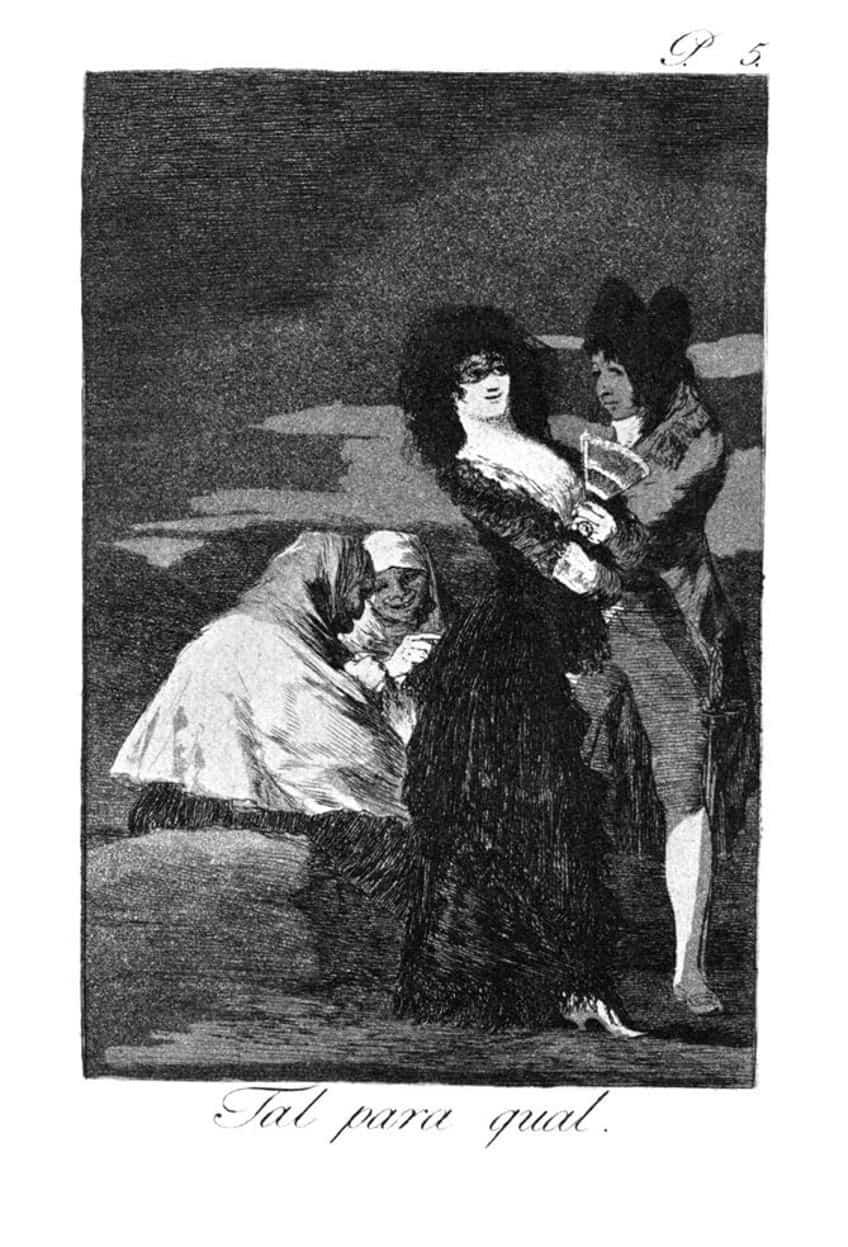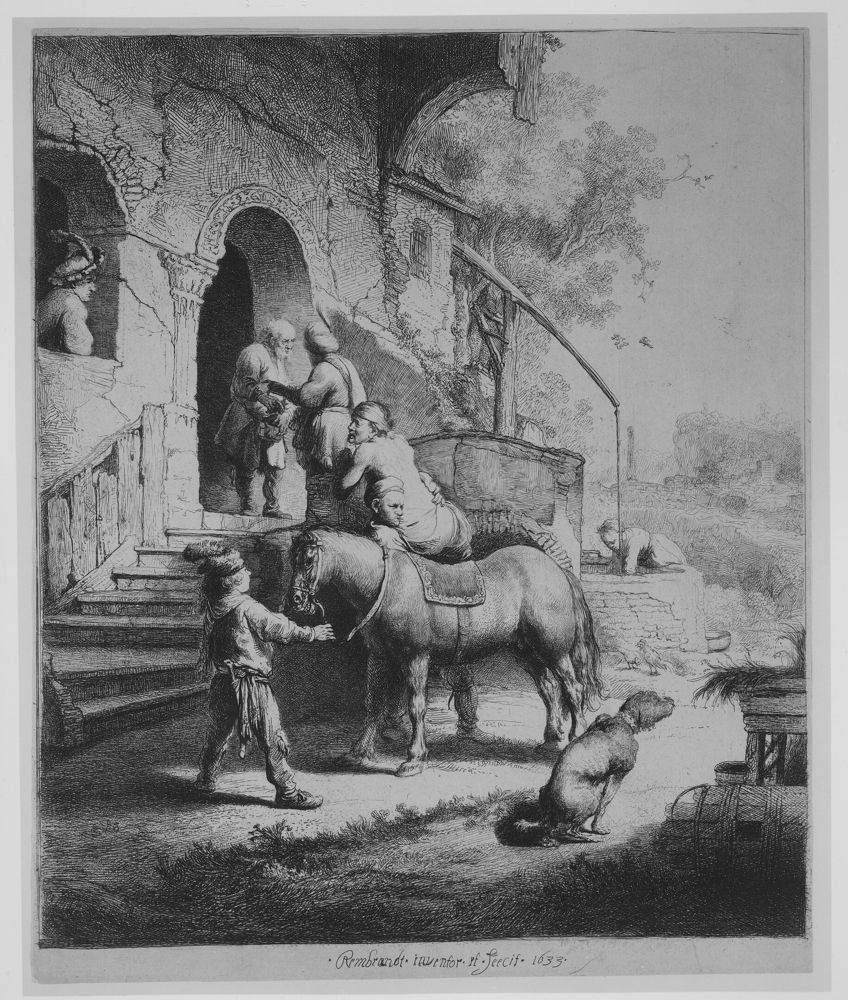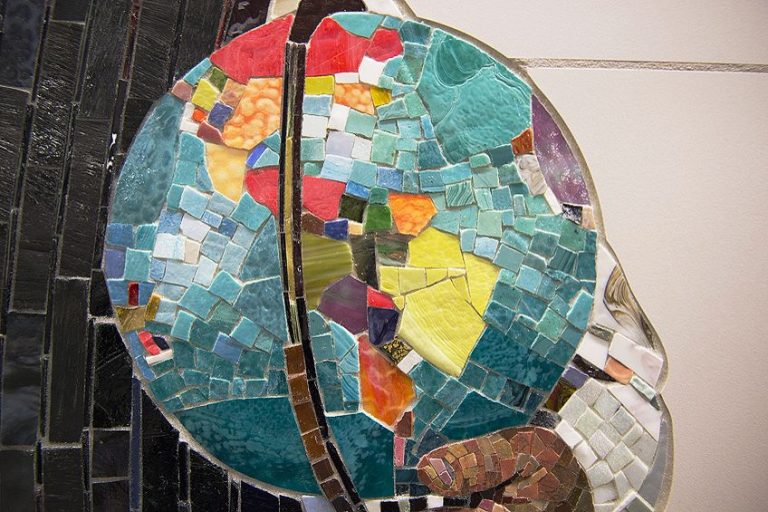What Is Intaglio Printing? – An Ancient Form of Printmaking
What is intaglio printing, and what are the different types of intaglio printing? The intaglio process for printmaking is one that involves an image being etched into a surface and the ink is held by the sunken part or incised line. After the primary relief method of woodcut fell out of favor around 1550, intaglio printmaking dominated both artistic prints as well as most forms of illustration until the mid-19th century. To learn more about intaglio prints, carry on reading below!
Table of Contents
What Is Intaglio Printing?
Intaglio printmaking appeared in Europe long after the woodcut print, with the earliest documented surviving instances being undated illustrations for playing cards printed in Germany, most likely in the late 1430s, employing the drypoint process. Since the ancient era, goldsmiths have employed engraving to adorn metalwork such as holy artifacts, armor, and musical instruments, and the niello method, which involves rubbing an alloy into the lines to provide a contrasting color, also dates back to late antiquity. Scholars and printmakers have speculated that the practice of goldsmiths capturing an image on paper of a pattern etched on an object to retain a record of their works or to evaluate the quality may have inspired the concept of creating prints from engraved plates.

Martin Schongauer was a pioneering artist in the engraving method, and Albrecht Dürer is regarded as a well-known intaglio artist. Dutch and Italian engraving started slightly after the Germans, but by 1500, they were fully developed. Etching and drypoint were both invented in Germany in the 14th century, most likely by Daniel Hopfer and the Housebook Master, respectively. Engraving and woodcuts were used to create both sacred and secular imagery in the 15th century. One of the most prominent secular applications of the engraver’s craft was the manufacturing of playing cards, a favorite pastime among both the nobility and ordinary citizens.
Karel Klíč, a Viennese printer, pioneered a combined photographic and intaglio process in the 19th century.
Photogravure used a chemically etched copper plate to print and kept the smooth consistent tones of photography. This allowed a photograph to be reproduced on ordinary paper for use in albums or books. Gualtiero Giori, an Italian security printer, moved intaglio printmaking into the high-tech period in the 1940s and 1950s by constructing the first six-color intaglio printing machine, designed to make banknotes that combined greater aesthetic possibilities with higher security. Intaglio engraving is now primarily used on passports, banknotes, and select postal stamps.
How the Intaglio Process Works
The lines to be printed in intaglio printmaking are carved into a metal plate using either a hand-held cutting tool – called engraving – or acid’s corrosive effects – called etching. For instance, in etching, the plate is pre-coated with a thin layer of acid-resistant resin. The artist engraves their image with etching needles such that only the plate underneath is visible. The ground side of the plate is then dipped into acid. The acid eats into the exposed surface of the plate. Biting is a printing phrase that refers to the etching of an image by acid; its duration varies depending on the acid’s strength, temperature, metal reactivity, desired depth, and air pressure.

After the plate has been sufficiently bitten, it is withdrawn from the acid solution, the ground is carefully removed, and the plate is then dried and cleaned. In order to print an intaglio plate, ink is dabbed or wiped into the recessed lines. The plate is next cleaned with tarlatan cloth to eliminate the majority of its waste, and a last smooth wipe with newspaper is typically done, leaving it in the incisions. Dampened paper is often pushed against the plate, wrapped in a blanket, and pressed with a rolling press to provide uniformly high pressure to the plate’s ink-filled grooves. After that, the covering is taken off, revealing the paper and printed picture. The last processes are repeated for each additional copy required.
Types of Intaglio Printing
Numerous elements influence the finished print’s appearance, including the ink used, the manner of cleaning the ink from the plate, and the paper used — in addition to the printing process used and the artist’s control of the picture. The plate’s contours produce an embossment on the paper known as the plate mark, and the leftover ink on the surface is known as plate tone.
Prints are often developed through a process known as states, in which the artist prints a sample impression, then works the plate more until it has been finished, at which point the final proof is obtained.
At that moment, the plate is ready for editioning, which is the process of creating several impressions that the artist then numbers and signs. Traditional intaglio processes include mezzotint, drypoint, engraving, etching, and aquatint. Each of these methods generates prints with a different appearance, and many prints are made by combining two or more of these various intaglio processes.
Engraving
Engraving is one of the earliest printmaking methods, dating back to the Medieval era. The artist produces lines by carving into the copper plate using a burin tool. This takes great perseverance and practice. Curved lines are made by twisting the plate while pressing the burin straight forward, rather than pressing the burin in a new direction. It is a very linear method in which shade is achieved mostly by hatching and crosshatching. Burins come in a variety of sizes, but even one burin will provide the engraver with a lot of control over the line. The burin’s tip is diamond-shaped. The line grows broader as the sharp tip is driven further into the copper. As the cut progresses, the line grows thinner, similar to that of a crow-quill pen. This thin-to-thick-to-thin method is used by engravers to create the majority of their tones.

Etching
Etching has been practiced since the early 1500s. Traditional etching is still practiced to this day, as are a plethora of derivative methods produced since then. Etching, compared to the laborious process of engraving, is exceptionally spontaneous and fluid. At the start of this intaglio printmaking process, the metal plate is covered with a thin layer of etching ground, an acid-resistant asphaltum-based material. The artist exposes the metal by drawing lines through the ground by utilizing an etching needle. The plate is then immersed in a weak acid bath, which etches or bites the exposed portions, leaving them sunken under the plate’s surface. The longer the plate is exposed to the acid, the more of the metal is consumed, leading to darker and deeper lines.
Multiple bites are frequently utilized to provide a range of line thicknesses. In contrast to an engraved line, an etched line normally retains the same thickness from beginning to end.
Drypoint
Drypoint, like etching, involves spontaneous illustrating. It does not need acid, unlike etching. The method, which has been used since the early 1600s, requires scratching the image straight onto the surface of the plate using a diamond-pointed needle. As the needle creates a shallow imprint beneath the plate’s surface, it raises a small ridge of metal known as a burr. The burr, instead of the recessed line, absorbs the majority of the ink. Drypoint generates a soft, warm line with a little quantity of ink extending beyond the line. Drypoint lines, like etched lines, fluctuate from thin to thick and then to thin again, but they have a softness that engraving does not have. Burrs break down fast due to friction from cleaning the plate and can only be pushed a few times. To print a big edition, the artist needs to use a procedure known as steel facing in order to render the plate’s surface more permanent.

Aquatint
Aquatint, which was invented in the 1600s, is a kind of etching. However, it is so extensively used and comprises so many versions of its own that it is usually regarded as its own media. It varies from line etching in that it is largely a tonal method, akin to commercial halftone printing, which creates tones by using microscopic dots. The tone is established in aquatint by minuscule, virtually microscopic light dots inside a black area. Aquatints are frequently used in conjunction with regular line etching or other etching processes.
An aquatint is started by coating the plate using fine rosin powder.
The plate is then heated until the powder melts and forms droplets that stick to it. When the plate is put into the acid bath, these droplets protect tiny, generally equally distributed spots on the plate. As the plate is printed, small light dots appear within ink fields, which our eyes interpret as an even tone. Before immersing the plate in acid, the artist covers the places where no tone is wanted with an acid-resistant compound known as asphaltum. After this stage, the plate is soaked in acid and bitten. The longer it stays in the acid, the darker and deeper the final tone becomes.

The plate is then taken out of the acid, cleaned with water, and dried. In the majority of instances, the artist subsequently repeats the procedure, painting more regions with asphaltum to keep them at the present tone and then re-submerging the plate in acid, resulting in even deeper tones in the unprotected parts. Aquatint tones are flat and even, although they can be changed by burnishing or other etching processes. By carefully placing the plate into the acid solution, areas may be caused to fade from light to dark. The parts that are immersed initially spend more time in the acid than the parts that are submerged last, making them darker.
Mezzotint
The technique of mezzotint was invented in the 1640s by Ludwig von Siegen of Amsterdam. It is the only intaglio technique that works totally from dark to light. It creates distinctive silky tones that sometimes seem rather artistic. The artist starts by prepping the copper plate for printing as a uniformly black field. This is accomplished with a rocker, which has a grip on the top and a serrated, curved metal bottom with teeth. The artist grips the handle tightly and shakes the instrument across the plate’s surface in a tight, organized pattern.
The plate is shaken in many directions at once.
The teeth puncture the plate’s surface, generating a large plethora of microscopic indentations to retain the ink. A solid black picture will appear once the totally rocked plate has been inked and printed. The artist crafts the picture by smoothing the rough plate with a variety of metal tools known as scrapers and burnishers. These burnishers may be used to create delicate tones as well as edges and sharp lines. Burnished areas retain less ink while printing, and vice versa.
Famous Intaglio Artists
Above, we looked at the history of Intaglio prints and how the Intaglio process works. We also looked at the various types of intaglio printmaking that have been developed through the ages. Now, let’s find out more about the various artists who used this process when making their own artworks. Albrecht Dürer was a Renaissance-era German painter, printer, and thinker. He is widely considered one of the finest engraving masters of all time. Dürer’s engravings are distinguished by their attention to detail, technical accuracy, and creative use of light and shadow.

He experimented with a variety of topics, including various religious themes, landscapes, mythology, and portraiture. Dürer’s engravings demonstrated not only his technical prowess but also his ability to transmit complex emotions and storylines through the art of printmaking. Rembrandt was a famous Dutch artist and engraver who is regarded as one of Europe’s finest painters. He revolutionized the etching process and was instrumental in bringing it to the status of an art form in its own right. Rembrandt’s etchings are widely recognized for their emotive use of line and texture, which results in a broad range of atmospheric effects and tones. Francisco Goya was a Spanish printmaker recognized for his striking, often melancholy imagery.
Goya’s etchings depicted images of conflict, bloodshed, satire, and the evil side of human nature, capturing the political and social turmoil of his day.
His use of stark contrasts, sharp lines, and dramatic compositions made the viewer feel uneasy. Goya’s etchings were a visual commentary on the volatile times in which he lived, and his intaglio prints still continue to impact many artists today. Giovanni Battista Piranesi was a famous Italian artist known for his lavish architectural prints. He mostly worked with the intaglio etching method, creating intricate and imaginative views of ancient Rome and other architectural motifs. Piranesi’s prints often included vast and ornate constructions, exuding grandeur and spectacular dimensions. Piranesi’s skill of etching, along with his visionary architectural ideas, elevated him to the status of one of the most prominent painters of his day and a pivotal player in the development of Romanticism.
Intaglio Printmaking Today
Intaglio is a printmaking method with a long history, yet it continues to hold importance in the contemporary art world. While intaglio fell out of favor throughout the 20th century due to the advent of other creative mediums, it has enjoyed a rebirth in recent years. Many modern artists are rediscovering and utilizing intaglio within their work. This rebirth is being driven by a revived interest in classic printing processes as well as a desire to explore the expressive capabilities of the medium. Intaglio has incorporated technical improvements as well. Traditional intaglio methods are now used with digital instruments like laser photo-etching and engraving to produce hybrid artworks that integrate the old with the modern.

Intaglio printing works by incising a plate’s surface with tools or acid. Following that, the plate is inked. The surface is wiped clean, leaving just the incised portions with ink. Finally, a wet piece of paper is placed against the plate. Engraving is the most traditional and widely-used intaglio method. Etching is a very old technique that dates back to the 13th century and was used to put designs on armor. The lines of the picture are scratched straight into a plate using a pointed needle called a drypoint needle for the drypoint intaglio process. The surface of the mezzotint print is totally imprinted with a complex network of lines.
Frequently Asked Questions
What Is Intaglio Printing?
Intaglio is an Italian word for printing processes in which the design is incised into the metal plate’s surface. After inking the plate with a roller, the surface is wiped clean, leaving just the color in the sunken areas. After being inked, the plate is placed on the work surface of an etching press, which is a type of machine with two steel rollers that apply pressure. A wet sheet of paper is placed on top of the plate, followed by two felt blankets. After that, the bed is spun between the two rollers, forcing the paper into the recessed sections of the metal plate.
What Are the Types of Intaglio Printing?
There are several ways to make intaglio prints. These include mezzotint, etching, drypoint, engraving, and aquatint. However, some artists like to use a combination of these various types of intaglio printing.
In 2005, Charlene completed her Wellness Diplomas in Therapeutic Aromatherapy and Reflexology from the International School of Reflexology and Meridian Therapy. She worked for a company offering corporate wellness programs for a couple of years, before opening up her own therapy practice. It was in 2015 that a friend, who was a digital marketer, asked her to join her company as a content creator, and this is where she found her excitement for writing.
Since joining the content writing world, she has gained a lot of experience over the years writing on a diverse selection of topics, from beauty, health, wellness, travel, and more. Due to various circumstances, she had to close her therapy practice and is now a full-time freelance writer. Being a creative person, she could not pass up the opportunity to contribute to the Art in Context team, where is was in her element, writing about a variety of art and craft topics. Contributing articles for over three years now, her knowledge in this area has grown, and she has gotten to explore her creativity and improve her research and writing skills.
Charlene Lewis has been working for artincontext.org since the relaunch in 2020. She is an experienced writer and mainly focuses on the topics of color theory, painting and drawing.
Learn more about Charlene Lewis and the Art in Context Team.
Cite this Article
Charlene, Lewis, “What Is Intaglio Printing? – An Ancient Form of Printmaking.” Art in Context. August 30, 2023. URL: https://artincontext.org/what-is-intaglio-printing/
Lewis, C. (2023, 30 August). What Is Intaglio Printing? – An Ancient Form of Printmaking. Art in Context. https://artincontext.org/what-is-intaglio-printing/
Lewis, Charlene. “What Is Intaglio Printing? – An Ancient Form of Printmaking.” Art in Context, August 30, 2023. https://artincontext.org/what-is-intaglio-printing/.









